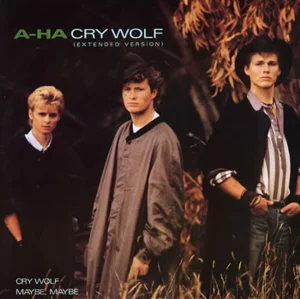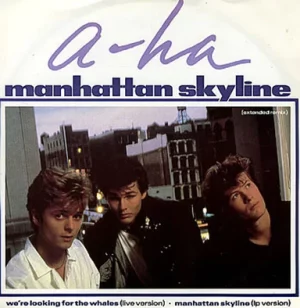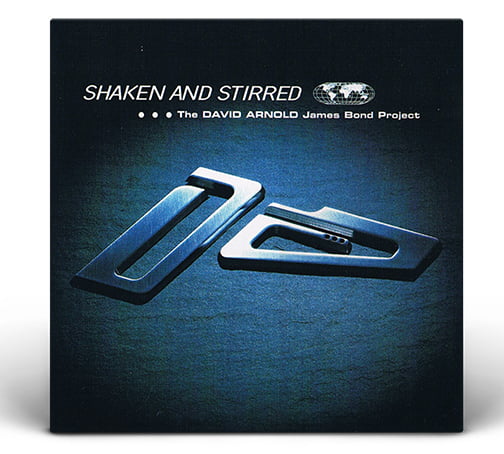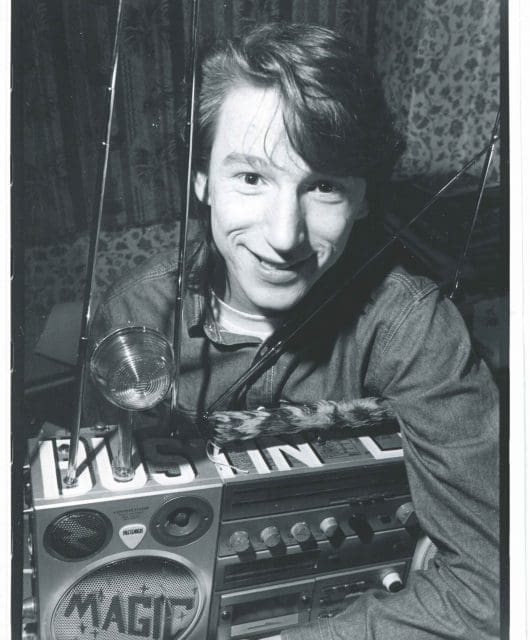Classic Album: a-ha – Scoundrel Days
By Felix Rowe | January 22, 2024
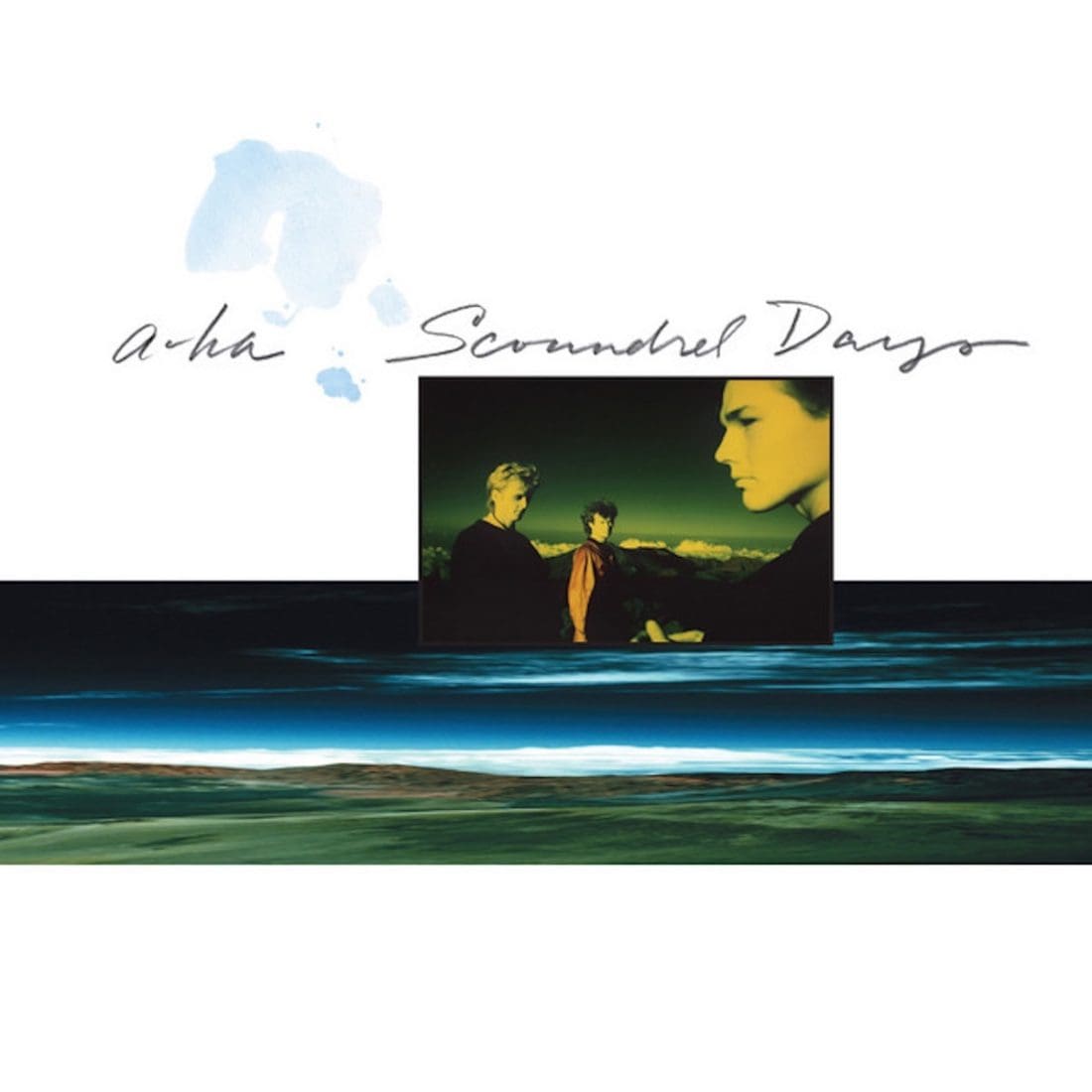 Classic Pop takes a look back at a-ha’s dark sophomore LP, Scoundrel Days, and discover an album more Smashing Pumpkins than Smash Hits
Classic Pop takes a look back at a-ha’s dark sophomore LP, Scoundrel Days, and discover an album more Smashing Pumpkins than Smash Hits
Just how on earth do you follow up that song? With the difficult second album, Norway’s finest, a-ha, returned with a much darker record in Scoundrel Days – a melodramatic synth-operetta that revealed a more complex and intriguing group than their poster boys image would suggest.
At the risk of stating the bleeding obvious, Take On Me is a seriously good pop song. In fact, it’s too good; so apparently effortless, immediately accessible and easy on the ear that we tend to overlook quite how sophisticated, intricate and well-crafted it is.
NORWAY’S FINEST
It’s even simpler to dismiss its instantly hummable hook as mere bubblegum fodder, when delivered by three easy-on-the-eye Nordic cherubs, barely out of their teens. It’s so inherently marketable, the cynical might suspect foul play. Only when you stop to analyse its constituent parts (and attempt to hit that note) does the penny finally drop that you’re dealing with three heavyweight musos who’ve really got their shit together. Seriously good pop indeed.
Needless to say, it conquered the world through heavy MTV and radio rotation. The album from which it came, 1985’s Hunting High And Low was equally ubiquitous, selling by the bucketload and producing another hit single, The Sun Always Shines On TV. When you’ve set the bar so high, where do you go from there? That was the very real problem that a-ha had created for themselves. Of course, it’s a good problem to have. They were riding a wave of adulation; where they took it next was up to them.
Read more: Making Hunting High & Low
In 1986, singer Morten Harket was interviewed for Australian TV during the band’s first world tour (playing comparatively modest 2,000- to 4,000-capacity venues) off the back of that first record. Despite a packed schedule, the band were somehow managing to squeeze in some studio time Down Under, attempting to finish off the next record.
During the interview, Morten was asked the inevitable awkward question of how he felt about being ‘packaged’ – he responded in good spirits, gently emphasising it was the music that ultimately mattered to them, the connection with the audience, and the chemistry of the band.
DARKER TERRAIN
That first record forged their pop poster boys image, which (for the casual observer, at least) still defines them to this day. In reality, as second album Scoundrel Days sets out to prove, it was an ill-fitting tag that never really suited them in the first place. They didn’t try to escape the shadow of Take On Me by writing even bigger pop songs. Instead, they ventured into darker terrain.
A first listen of Scoundrel Days suggests it was designed to be a correction – a realignment that wiped clean all you thought you knew about a-ha and reintroduced them as sophisti-pop connoisseurs.
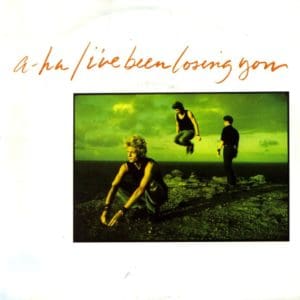
BREAKING THE MOULD
Often throughout, Morten’s vocal stylings are reminiscent of Simon Le Bon’s rich powerhouse delivery, but unlike Duran Duran’s projection of decadence, glamour and yachts in the Caribbean, a-ha’s imagery on Scoundrel Days fixates on subjects ranging from isolation and personal terror to abstract notions of searching for whales. Even the album’s title projects the contrary image of rough edges and seediness.
With its grandiose epic melodrama and verbose gothic lyricism, this brand of a-ha is more Smashing Pumpkins than Smash Hits. It’s tempting to draw some comparisons with their contemporaries Talk Talk, who initially were marketed as the ‘next Duran Duran’ by their record company, before breaking the mould to evolve into something more complex, pastoral and experimental.
A-ha are the textbook example that it takes 10 years to become an overnight success. The pre-fame rock band, Bridges (formed in the late 70s by teenage chums, Pål Waaktaar and Magne Furuholmen) was pivotal in the development of their sound.
Read more: Top 80s pop videos
Growing up on prog rock and psychedelic bands, their songcraft is as much indebted to Genesis and King Crimson as the synth-pop trappings they adopted of their own era. Once you understand that, it’s easy to identify in the proggy tempo changes, unexpected turns and abstract flourishes that abound on Scoundrel Days. See, for example, a-ha’s classic trademark fast/slow pivot, as exhibited previously on Take On Me, which rears its head on several occasions.
SWEET EMOTION
All of the songs on Scoundrel Days were written by Waaktaar and Furuholmen, with several composed solely by the former. Indeed, some of them began as either ideas or fully-fledged songs originally performed by Bridges – a catalogue of riches to be mined.
Despite his contributions to a couple of tracks on the first record, Morten Harket stepped back from the writing process. His limited involvement in this element has remained fairly consistent throughout the band’s career. Yet, while he rarely pens the lyrics or melodies that he performs, Morten owns them entirely, delivering his bandmates’ words with absolute conviction, eking out the emotion of each syllable. Though there are clear and frequent stylistic reference points to his contemporaries, Harket’s range is without equal and his personality key to a-ha’s unique character.
DIFFICULT SECOND ALBUM
The album was largely produced by Alan Tarney, who’d been brought in on Hunting High And Low to deliver the hit singles. God knows what the record label must have thought, then, when they turned in Scoundrel Days, because there’s little here that is as immediate or instantly accessible.
Even on the singles, Scoundrel Days demands more of the listener. The answers aren’t laid out in a conveniently digestible format, instead requiring repeated listens to unpick. Throughout, arrangements are busy, often densely layered in a slightly muddy mix. Sure, there’s an expensive sounding gloss, but it’s tempered by the many idiosyncratic twists a-ha take. Nothing is accidental, it’s all very deliberately crafted. The lyrical choices, melodic or rhythmic turns, and occasionally abrasive moments are wilfully abstruse.
EPIC MELODRAMA
There’s plenty of melodrama in the Tears For Fears mould, but actually it’s much weirder, more experimental and gothic than the Bath duo in many ways. In 2009, Magne told Dermot O’Leary during an interview with BBC Radio 2: “I feel more connected to Depeche Mode” when compared to their other contemporaries. That analogy certainly feels apt for much of Scoundrel Days, particularly when Morten delivers bleak couplets in a rich baritone over icy synths.
But it’s not all weighty, impending doom. A-ha’s ‘epic melancholia’ (as Mags describes it) has always traversed that thin line between pain and euphoria – or “Dancing with tears in my eyes” as another contemporary might have put it.
Read more: A-ha album by album guide
There are lighter moments, even those approaching whimsy, like Maybe, Maybe, which could just about pass for Syd Barrett if you strained your ear. And Cry Wolf, its menacing folktale inspiration aside, is as downright funky as anything Prince contributed to the dancefloor in the mid-80s. At various points, the album is danceable, uplifting and a hell of a lot of fun.
Waaktaar’s guitar hero ambitions are brought to the fore more explicitly, with thrilling results. While it’s still fundamentally a synth-pop record at heart (complete with all its stylistic trappings), a-ha are expanding the palette with occasionally abrasive guitars (see Manhattan Skyline) and quite frankly ridiculous drumming from session extraordinaire, Mike Sturgis. During those overblown fills on I’ve Been Losing You, you half expect the drummer to spontaneously combust in a Spinal Tap-esque puff of smoke. Clearly, they’re having fun with it, delivering the pomp with a raised eyebrow.
FAN FAVORITES
Scoundrel Days is a tricky one to place at times. Critics might argue the songs are slightly stilted by the robust and brittle mid-80s production treatment. On record, it’s near impossible to separate the core of each track from its muscular stylistic trappings. However, watching the same songs performed live at a 1994 arena show in South Africa, it’s a totally different beat – loose, raw, rocky, and well-worn in like your favourite pair of old jeans. By now you’re witnessing a well-oiled live unit that’s confident enough in its tightness to play it loose. Both versions have their merits, but the fact that the songs have evolved into enduring and anthemic fan favourites is testament to their power.
POP’S ROCKERS
Since that first meteoric rise, a-ha have remained underdogs of sorts. Rock royalty in their native Norway and quietly selling out colossal venues around the world, if never quite matching those heights in the UK and US mainstream. But time has served them well, with ongoing props from transatlantic rock A-listers like Coldplay and Weezer further cementing their status within that league. Despite the attempts of Scoundrel Days, they will never shake the clutches of Take On Me.
Some 35 years after conquering MTV, Take On Me conquered its successor platform, YouTube. In 2020, it became one of a select few to reach the one billion views mark (since then, that figure has nearly doubled).
RICH REWARDS
Scoundrel Days is a-ha’s ‘difficult second album’. But don’t confuse that for a lack of ambition or running out of steam. On the contrary, it was intentionally engineered that way; a deliberate altering of course that didn’t thwart their legacy, but merely rebuilt it in their own design. It was no commercial flop, going on to shift more than six million copies worldwide and counting. In truth, it’s not a drastic departure from the sound that made them bedroom pin-ups, but it asserted artistic ambitions far beyond the two-dimensional image that had been bestowed upon them.
Scoundrel Days is a harder nut to crack, but it’s more than worth persevering for the rich rewards it contains inside.
THE SONGS
Scoundrel Days
“Was that somebody screaming?” It’s a bold opening line over an eerie arpeggiated synth line – a combination that reeks of early Human League, particularly in the Philip Oakey vocal stylings, with a little Depeche Mode thrown in.
The title track is gothic, cinematic and dramatic. We can only assume the abstract opening minute is intended to filter out casual fans before it hits that soaring chorus we’ve come to know a-ha for.
Here on in, it’s got the powerhouse drama of Duran Duran, though much more menacing than many fans would expect, with the darkness of The Cure or Echo And The Bunnymen. Live strings in the final third give a cinematic feel that hints perhaps of their later Bond theme.
The Swing Of Things
It opens with jingly bell synths that recall Depeche once again, a cool bass sound and electro tom-tom drum fills, followed by a jittery beat, before dropping into half-time for the chorus (oh so very a-ha!).
Their influence on Coldplay is very apparent in the epic singalong chorus. The synth sounds are fantastic, and so completely of their time, with the baritone vocals. Very lyrical, and again, it’s an epic, melodramatic sound.
Over the course of four-plus minutes, The Swing Of Things morphs through at least seven different genres – constantly switching the rhythm or mood as soon as you feel you have a handle on it. Eventually, it rises into a driving rock song, thanks to propulsive drums that wouldn’t be out of place on a Bruce Springsteen drivetime anthem like Born To Run.
I’ve Been Losing You
The first single of the record. A lighter mid-tempo, yet upbeat, track, with more frenetic drums from Michael Sturgis (listen out for that totally ridiculous drum fill after a break just under four minutes in) and a groovy bassline.
On first listen, it’s not an immediately obvious choice for a single, but then that’s just indicative of the darker sound that characterises the album. On repeated listens, it reveals itself to be an anthem of epic proportions.
Again, it’s got all the strut and swagger of Duran Duran dancing on the sand. The live drums add muscle and grit to the sound. The song’s genesis apparently began from a track from Waaktaar and Furuholmen’s earlier pre-a-ha group, Bridges.
October
A total change of pace here, opening with an atmospheric intro with a slightly incongruous blend of found sounds: ocean waves lapping against the shore, mangled church bells, footsteps and more otherworldly sonics.
From here, it then breaks into elevator muzak, lounge bossa nova with an 808 drum pattern, before the whispered vocals inject a more menacing quality, at odds with the backing track, music hall brass, and whimsical whistling.
Combined with the vaguely mockney vocal styling it comes off as a precursor to Damon Albarn’s fairground ride interludes that punctuate Blur’s ‘Life’ trilogy a decade later. Wait a minute, did a-ha just invent Britpop?
Manhattan Skyline
A chiming, glistening synth harpsichord sound waltzes along beautifully, as a subtle and subdued Morten sings “wave goodbye” in a sweet falsetto, before a minute in, dirty grungy guitars and eerie synths arrive and shake up all preconceptions as the vocal turns into a guttural primal growl. This is a-ha at their absolute best, experimental and genuinely thrilling.
Cry Wolf
Opening with the suggestion of screaming crowds, over a spooky spoken word, before a very funky synth bassline (with shades of Thriller) and another frenetic drum part. One of the catchiest tracks, particularly with the falsetto “woo-ooh” refrain on the chorus after the “cry wolf”. This could almost pass for Talking Heads on Speaking In Tongues in its pure, angular white-boy funkiness and percussive stabs. One of a few tracks to build around a groove rather than a chord progression.
We’re Looking For The Whales
After a chugging, atmospheric synth introduction, a slow beat then skips to double time (the recurring a-ha trademark). With its upbeat major key progression, it’s one of most straight up pop-sounding tracks on the album… but also not, with its abstract lyrical content.
The Weight Of The Wind
Another characteristically 80s intro with snappy keyboards and busy programmed drums, leading into a dramatic soaring, almost operatic vocal from Morten replete with heavy lyrical imagery. There’s a particularly whizzy synth solo two minutes in. This brand of pompous bluster would later be replicated by The Killers to great effect.
Maybe, Maybe
Suddenly, the mood is switched entirely, with a very light and bouncy Paul McCartney vibe The lyrics here seem dangerously close to the classic Morrissey line (coincidentally or not) released in the same year: “Maybe, you were only joking when you said that you were walking out on me.” OK, well perhaps that’s not quite as bad as being bludgeoned in your bed, Morten.
Vocally, it’s tinged with a little Roy Orbison vibrato, further enhancing the Mozza effect. It was released as a single – though apparently only in Bolivia, and exactly what enamoured it to that territory would be interesting to know. It’s a fun, good-time catchy melody.
With its plodding, almost ska-lite rhythm, it’s comparatively throwaway compared to the more dramatic moments elsewhere, but a necessary change and one of the most accessible songs on the record. A frantically busy synth interlude takes it somewhere different.
Soft Rains Of April
A dramatic opening, with synth pads and arpeggiating electronica, later joined by synthesized harp sounds and eerie keyboards. This album, and indeed this song in particular, highlights how real-deal musos a-ha actually were.
It’s really quite proggy. Following the earlier vocals, which are caked in reverb, the very last word of the song (and album), appropriately ‘over’, is dry, close and up-front, ending the record with a sudden, strange feeling of claustrophobic intimacy. This track was another cut lifted from Mags’ and Pål’s Bridges days.
For all of a-ha’s videos head here
REVISIT OUR A-HA TRUE NORTH INTERVIEW


